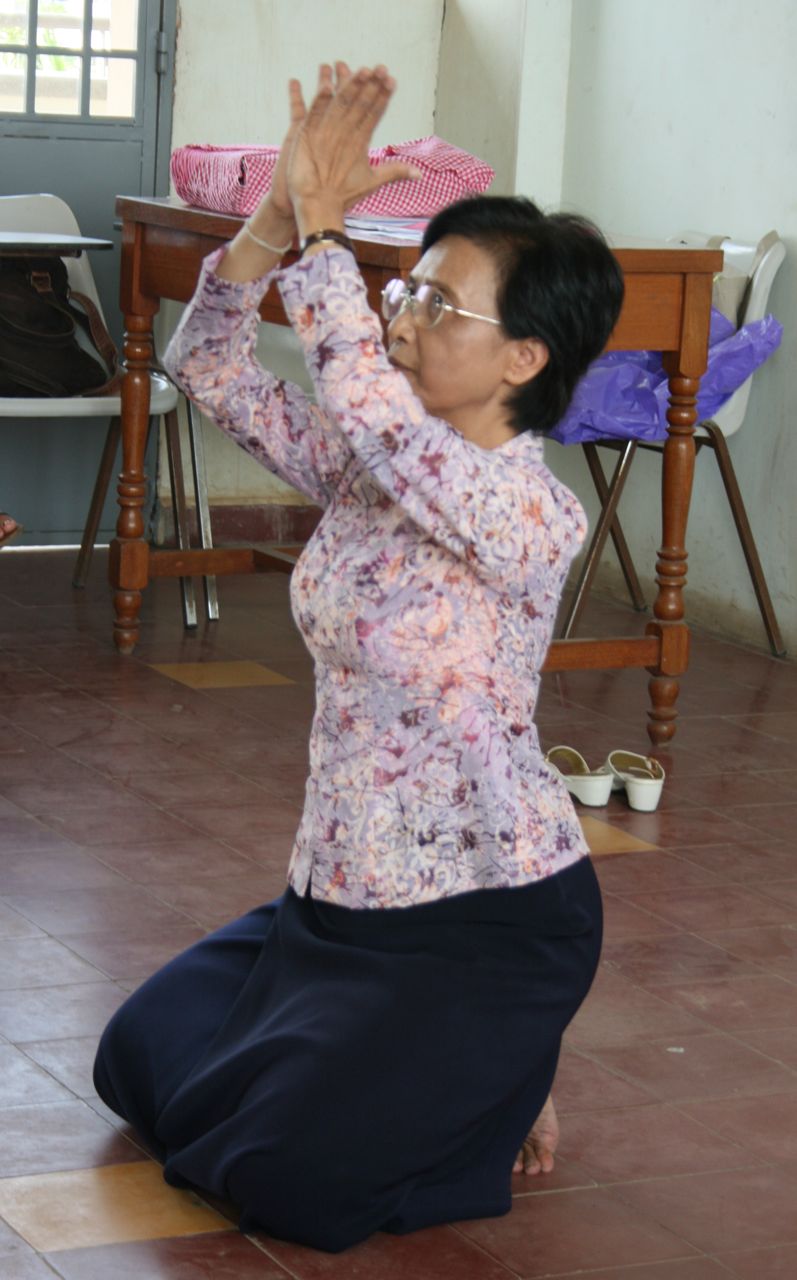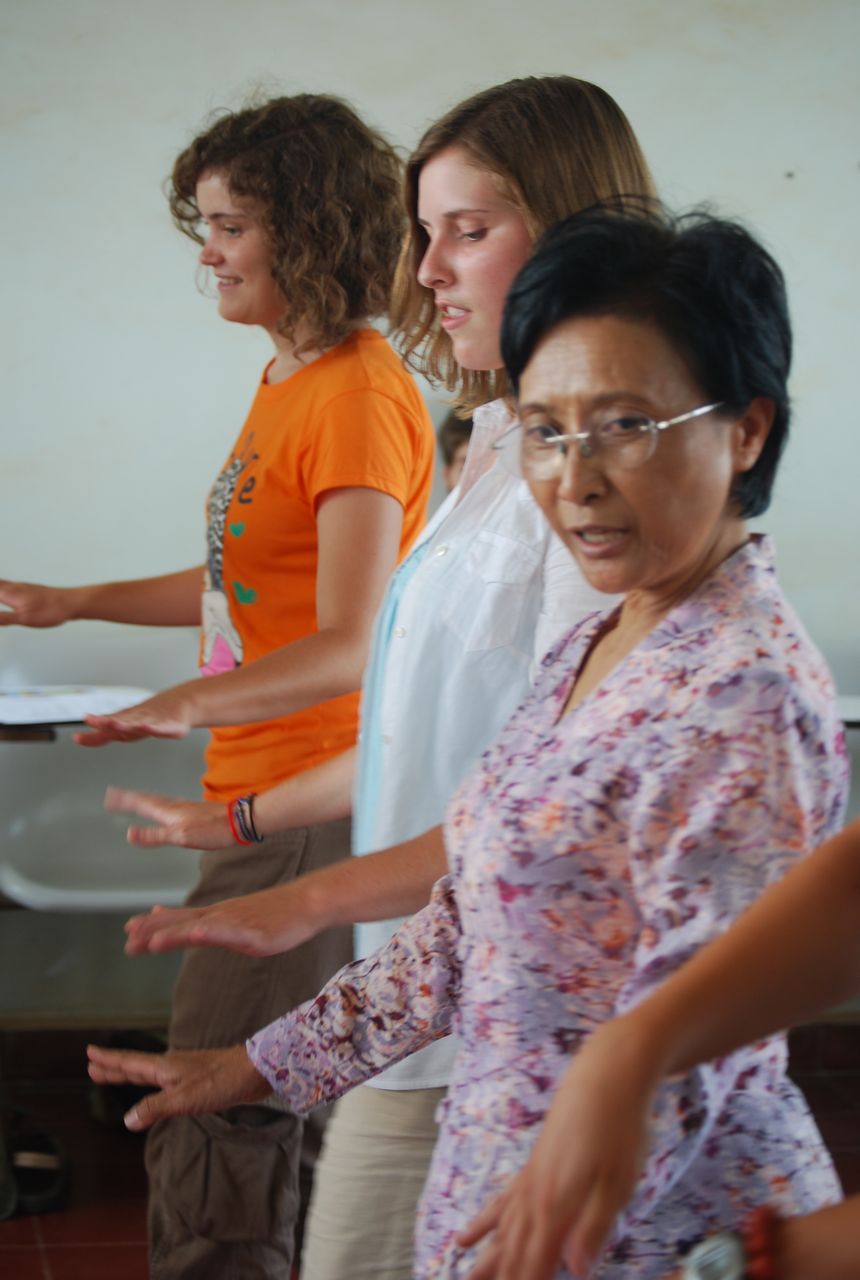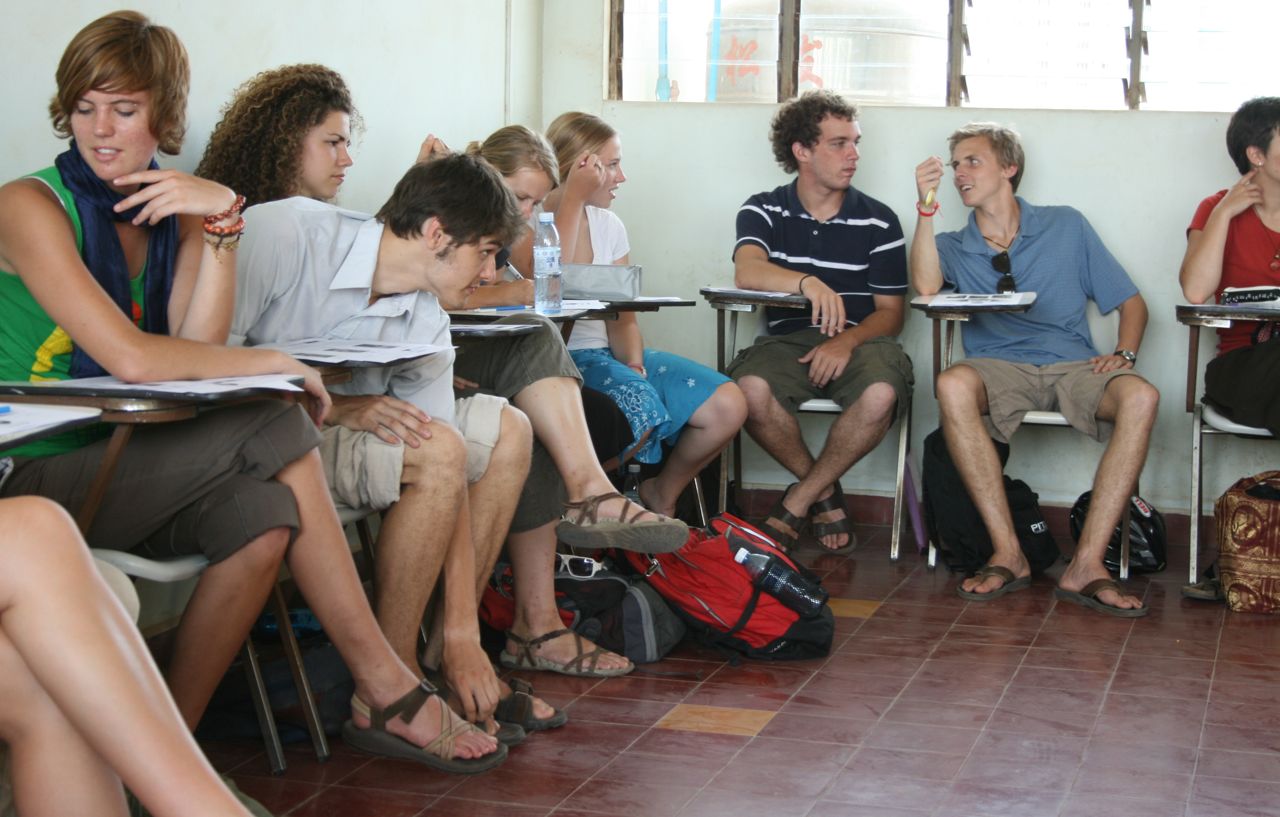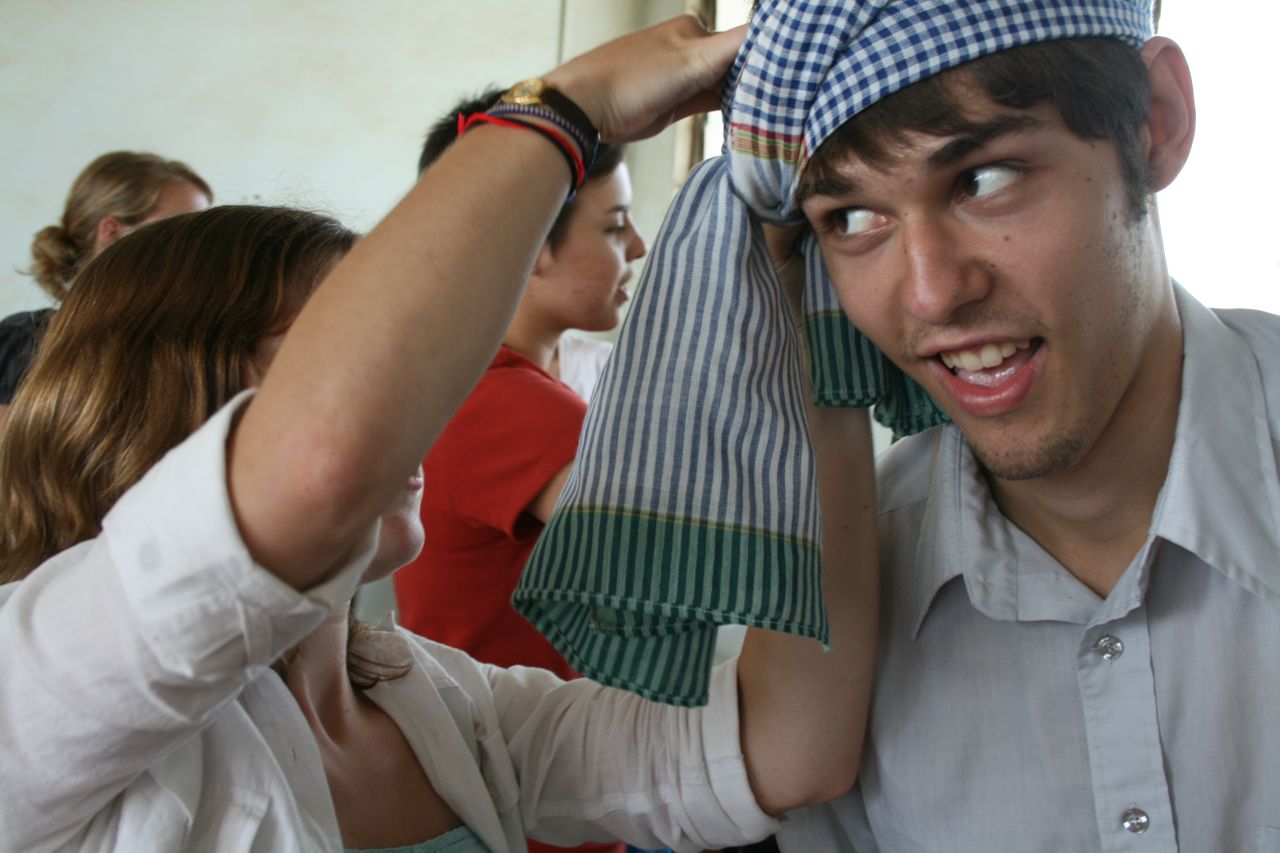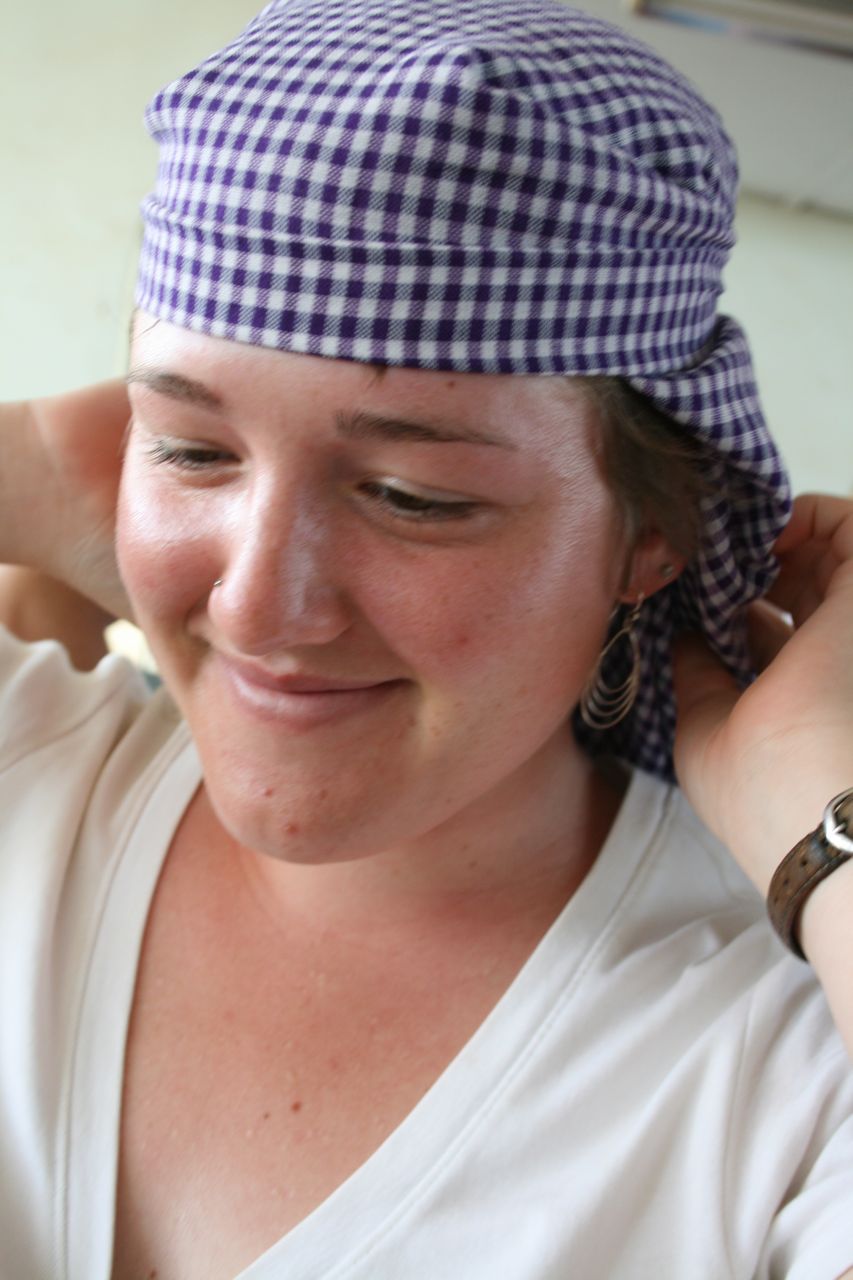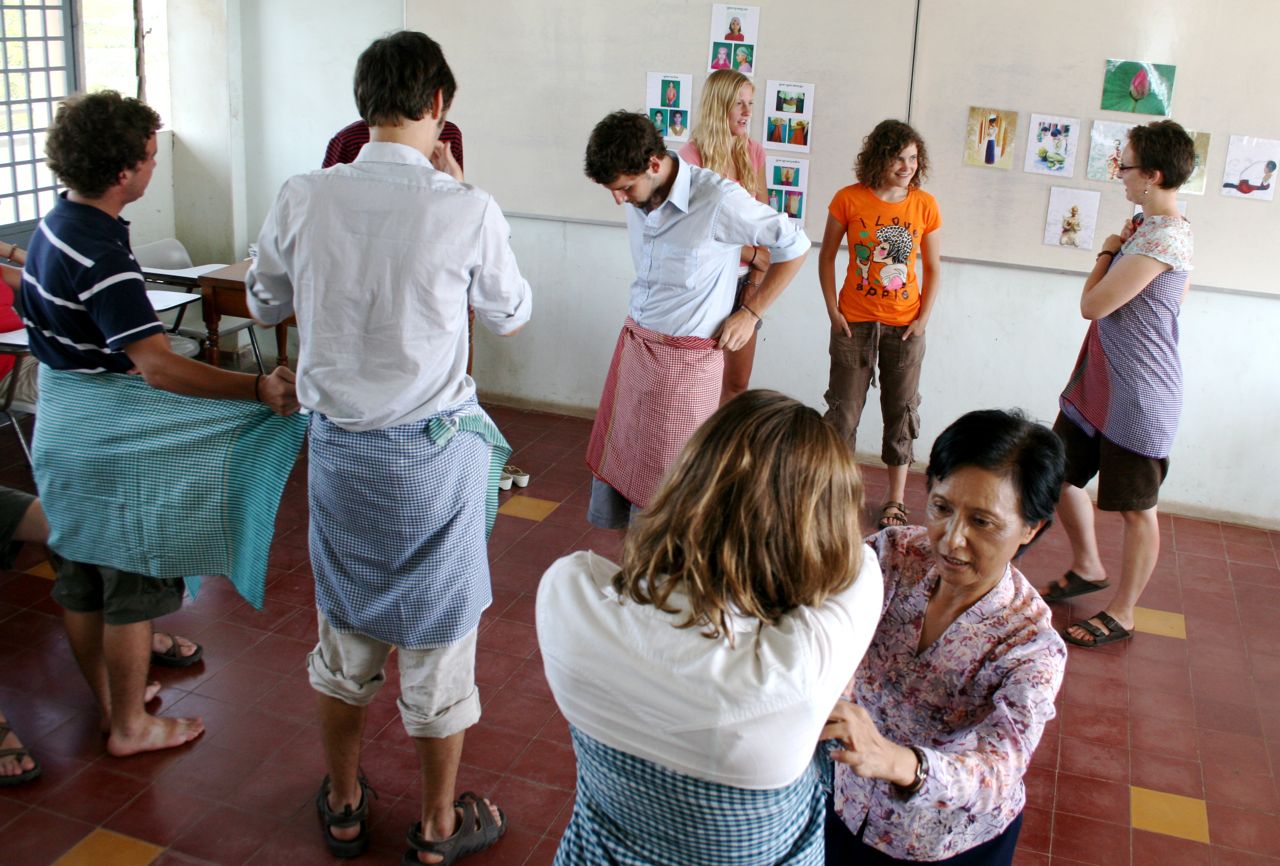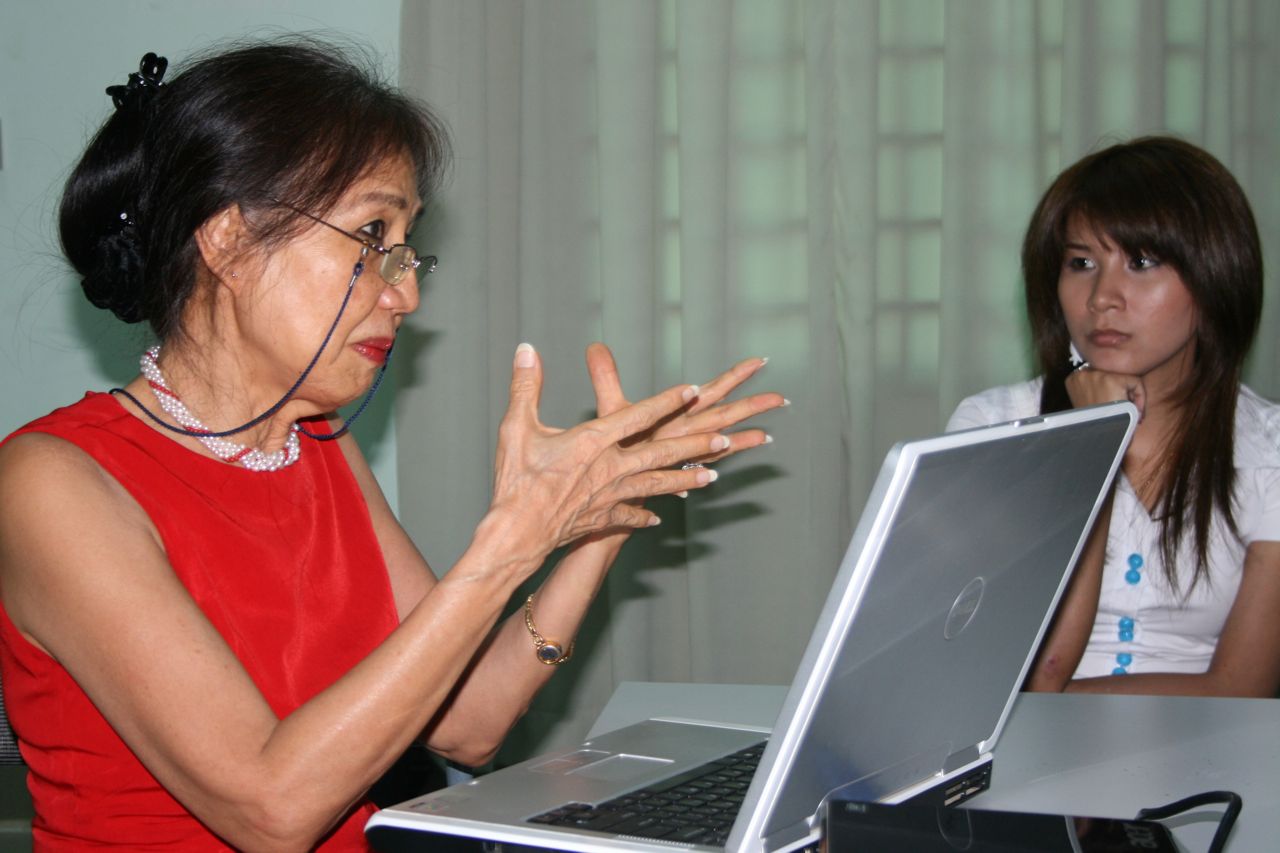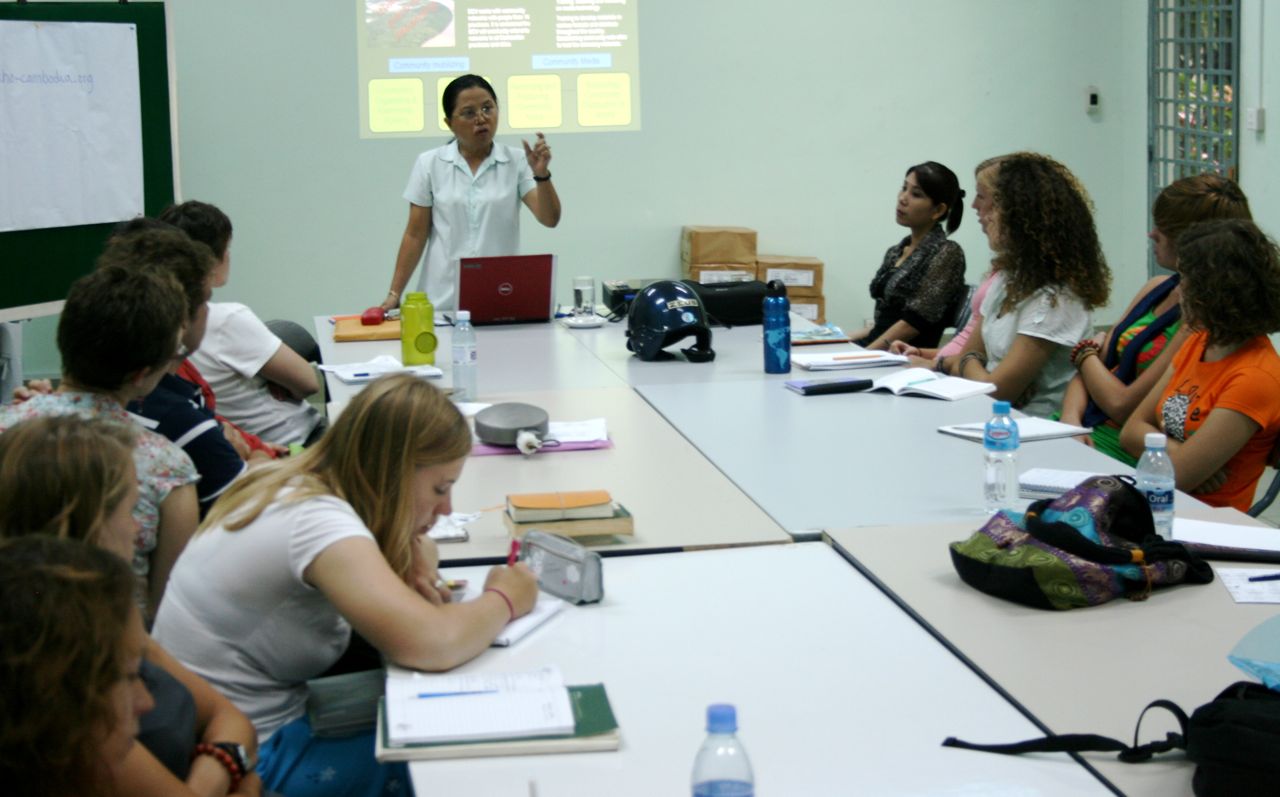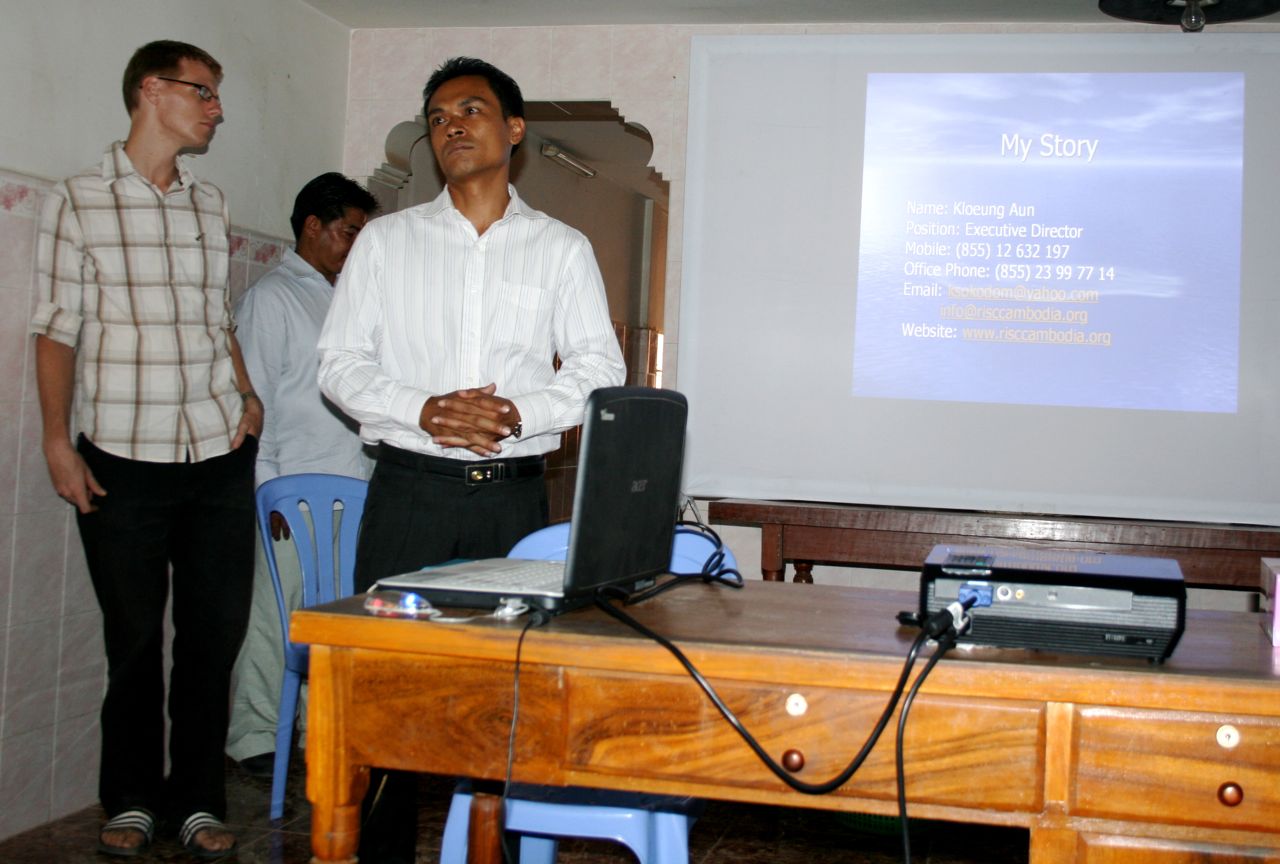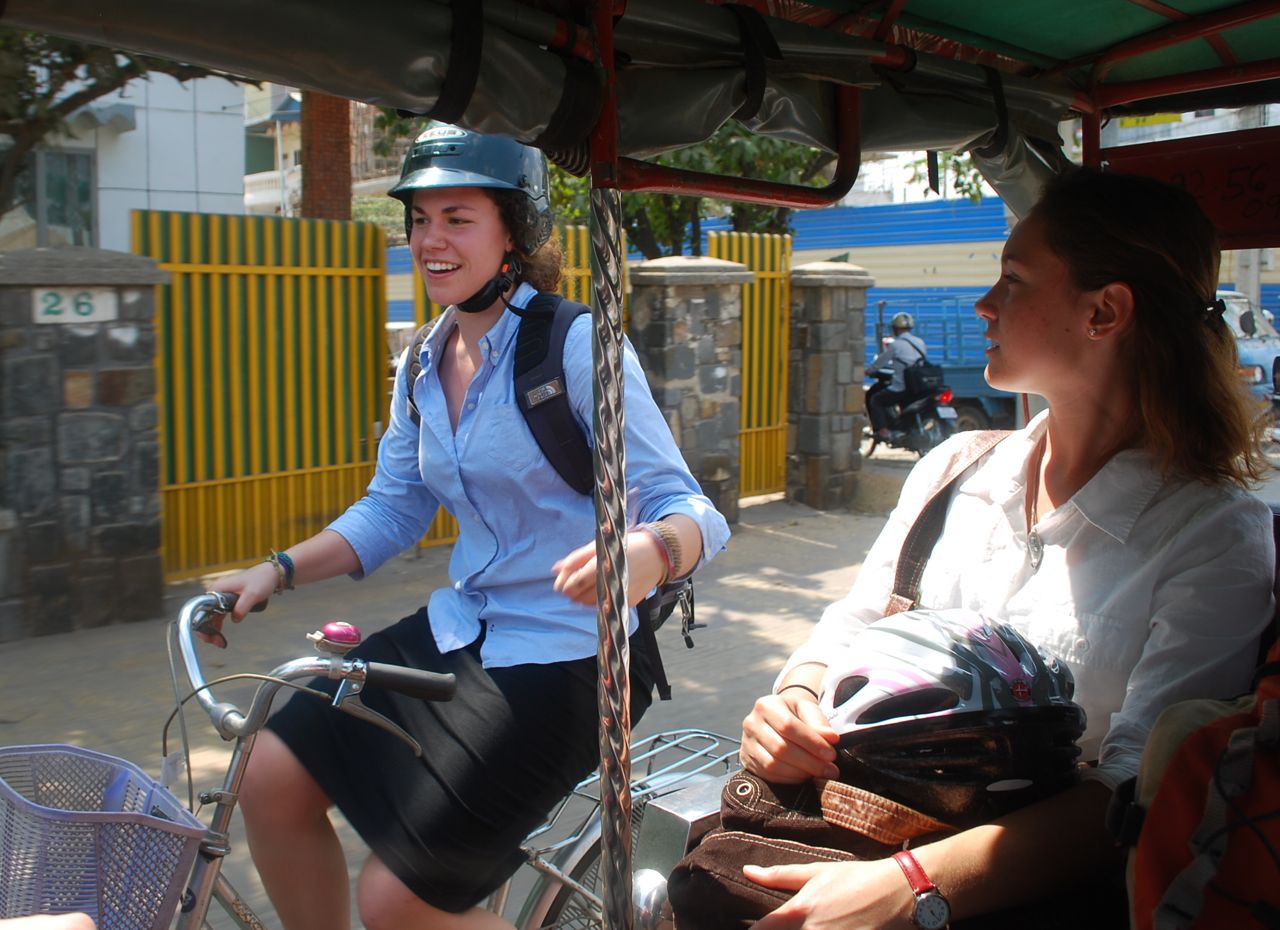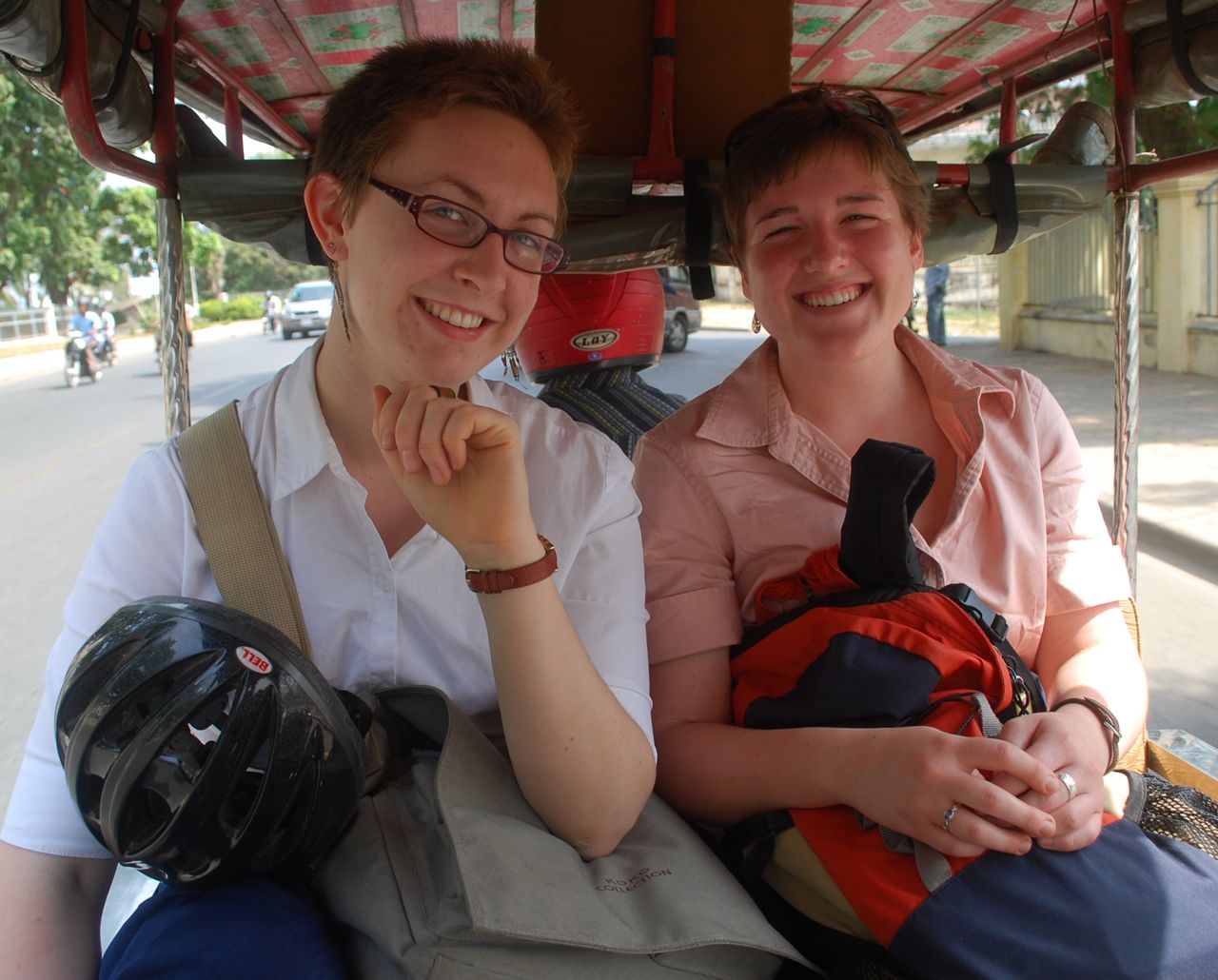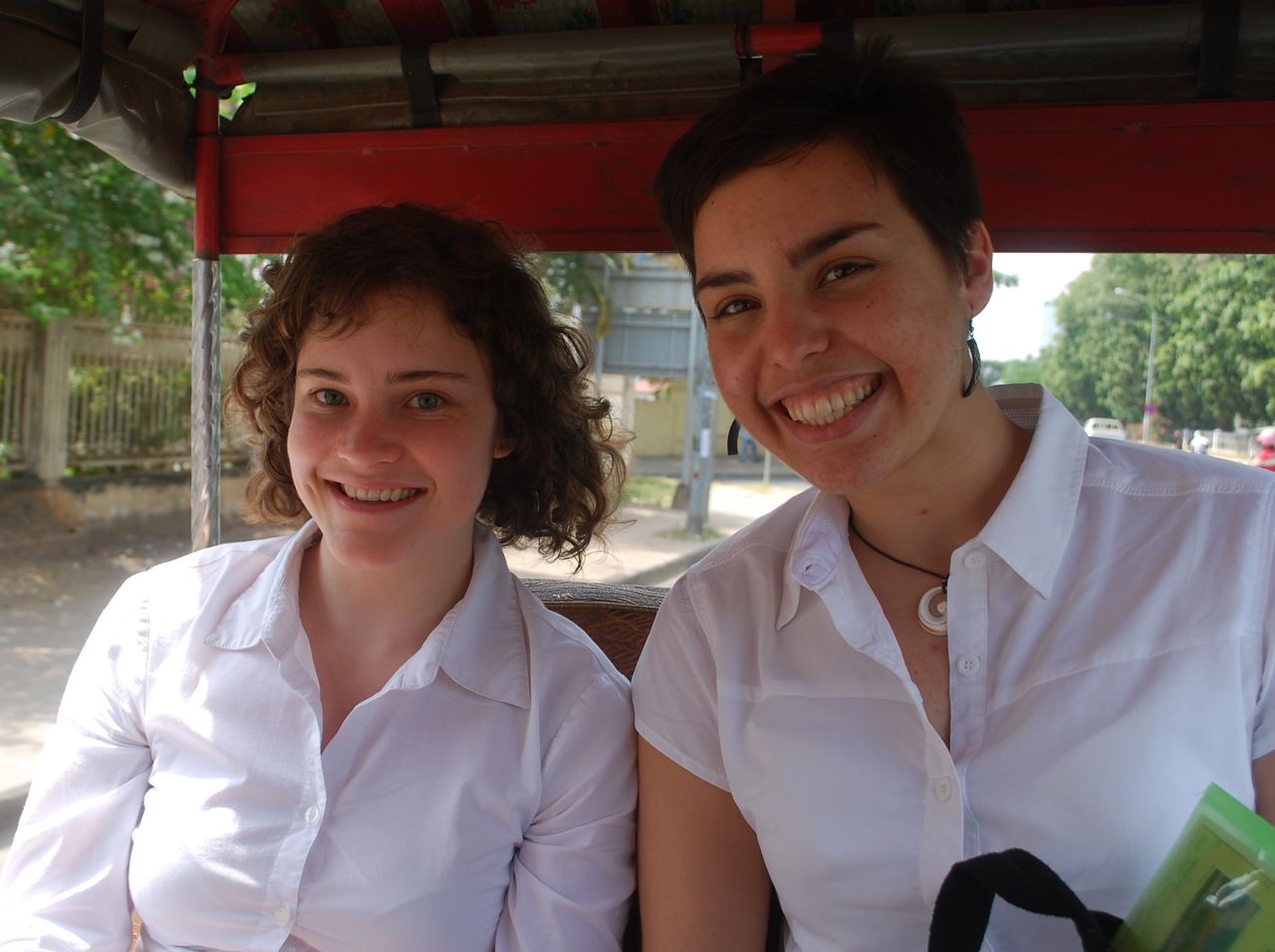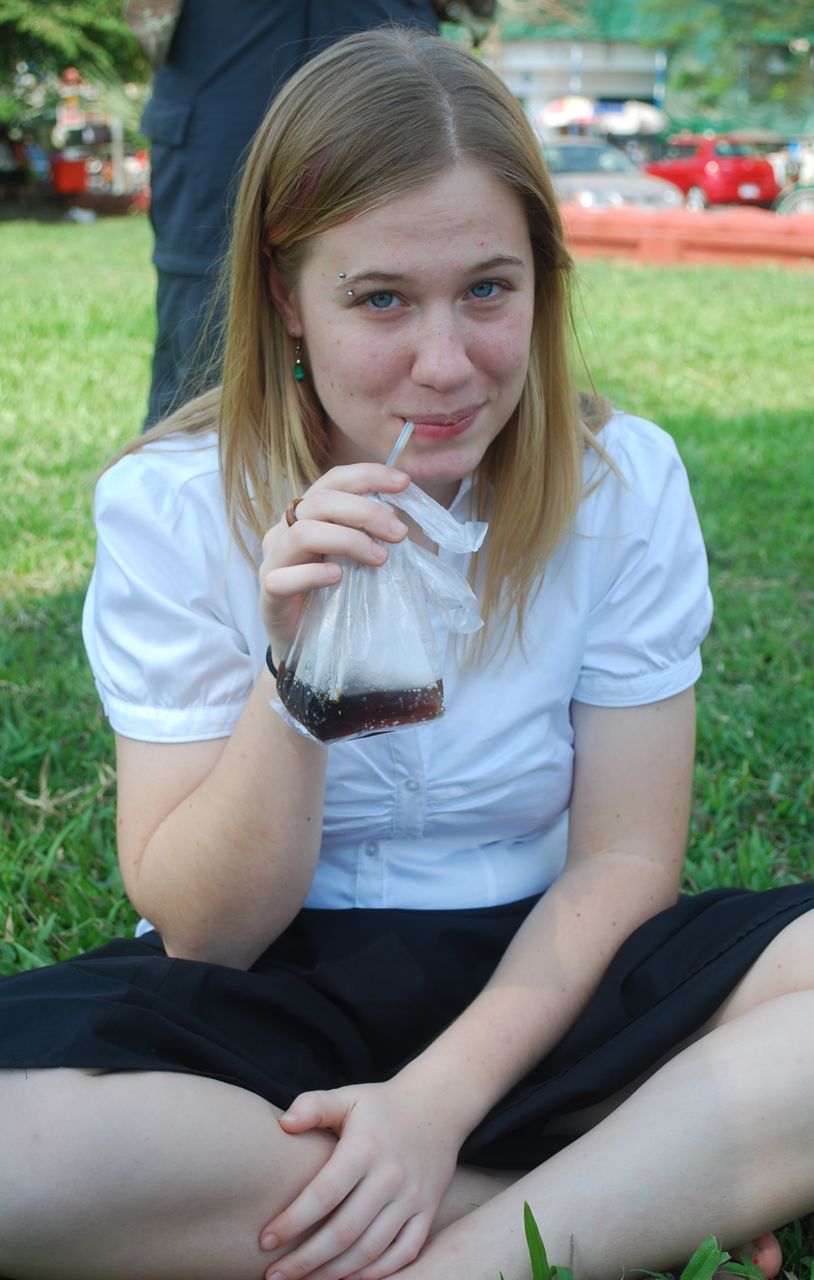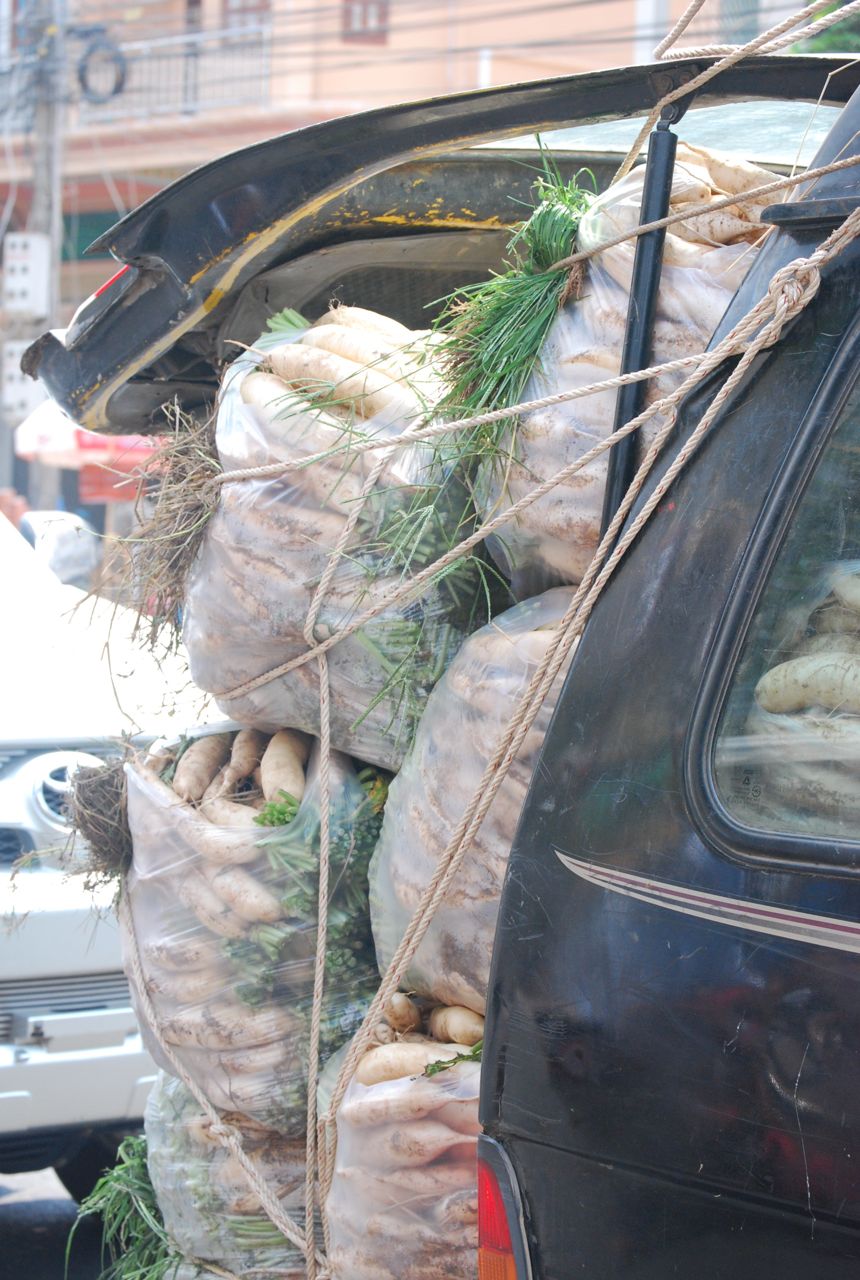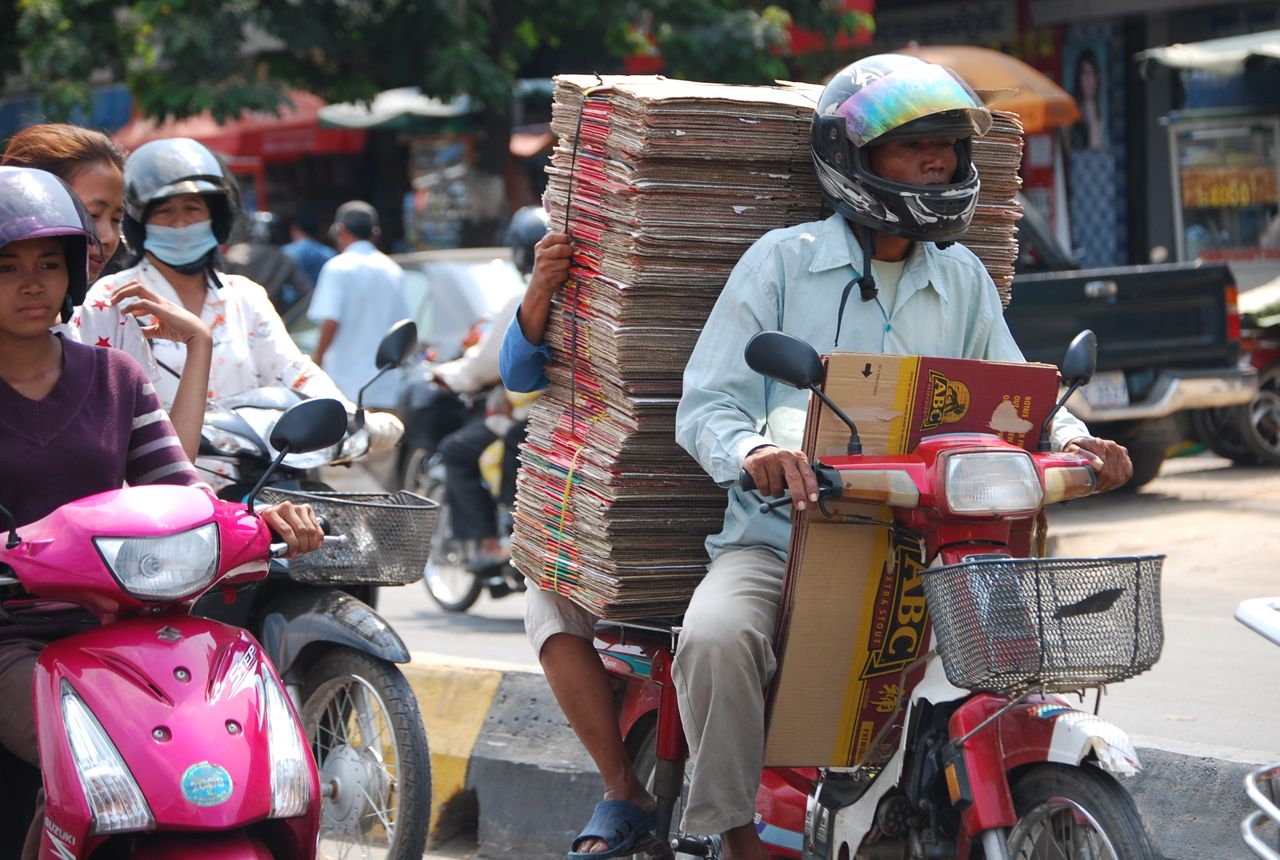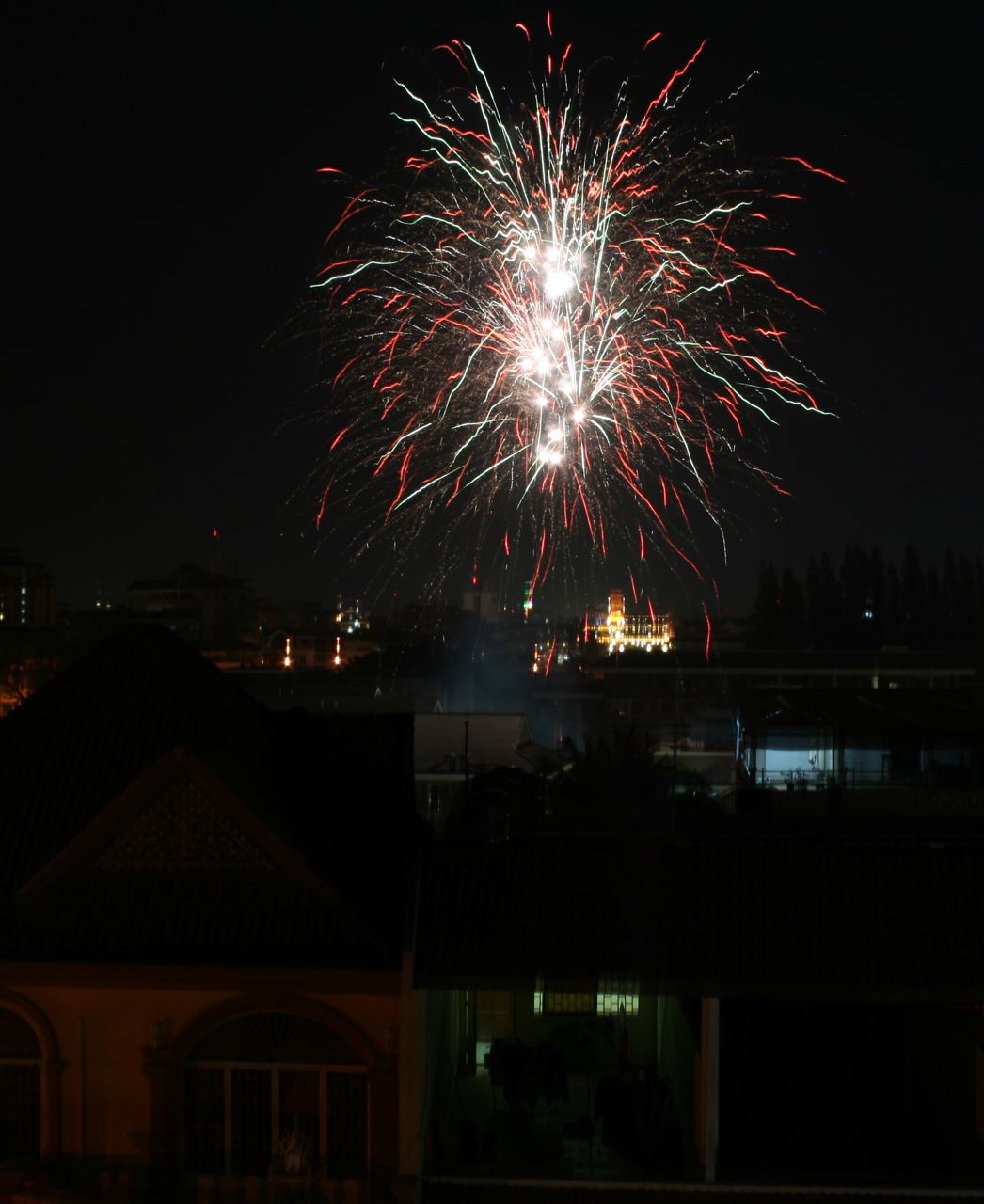Dancing the Day Away
Khmer teacher Prum Sisopantha offered students one of their most entertaining and practical lectures Wednesday afternoon this week, helping students through some of the most basic steps and hand movements in apsara dancing and modeling usage of the krama. The cotton krama, a large, usually checkered-patterned scarf, is ubiquitous in the city and even more so in the countryside.
As we learned from Teacher Pantha, the scarf can be used as a headress to block the sun, in typical scarf fashion to protect the soldiers, as a diaper-like garment for country men, and as a loosely-arranged cover for bathing outside. Since most group members will be showering outdoors in the countryside, with dump showers scooped out of enormous pottery basins, they needed to learn how to modestly clean their bodies while out in open spaces. Pantha was a delight, and easily held everyone’s attention for the entire two-hour lecture period.
Other stellar lectures last week were by Kek Galabru, founding director of LICADHO, a human rights organization, on “Protecting Human Rights in Cambodia”; Phuong Pry on “Building Community Voices”; and Koeung Aun on the Returnee Integration Support Center (RISC). RISC was created after the U.S. began deporting permanent-resident Cambodians who committed felonies — anything from shoplifting to robbery to other more serious crimes. Most of the Cambodians who have been returned to the country had moved to the U.S. as child refugees after the Khmer Rouge period. They had been granted “permanent resident” status and were not aware that when the laws changed after September 11, 2001, they could be deported. Most served their jail term fully in the U.S. and then were immediately deported to Cambodia. Some of the returnees barely speak Khmer, and most have no living relatives in Cambodia. Because many were born in refugee camps along the Thai border, some had never even set foot in Cambodia before they were “returned.”
Also shown here are various photos of student biking and tuk-tukking around town, plus some of the remarkable loads we see in cars and vans and on the back of motos (most of those photos were taken by Stephanie). The most remarkable, perhaps, is the photo of the live donkey being transported through the city of Phnom Penh on the back of a moto.
Since this week is Chinese New Year, students enjoyed seeing celebrative fireworks and firecrackers in various locations. Friday night the Graber Millers, who live directly behind the Chinese Embassy, were treated to a magnificient display of fireworks shot up from about 200 yards away.
We’re entering the last week of students’ city experience, trying to wrap up this phase of the academic program, seeking to be fully present with our city families, and also thinking ahead to the second half of SST in the provinces.

